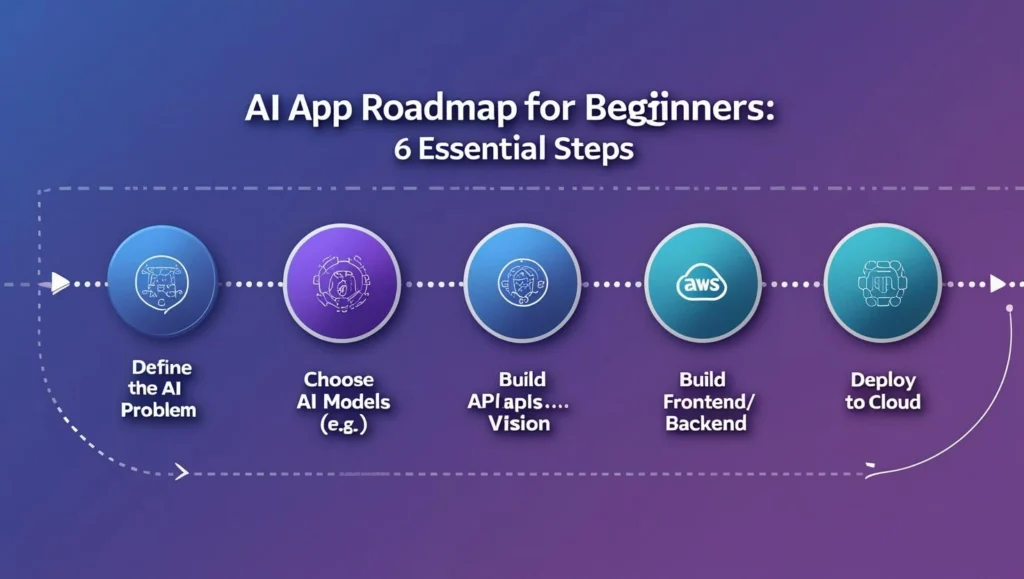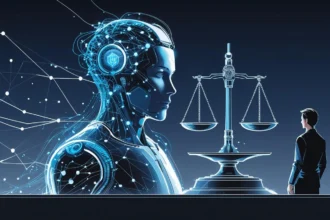Introduction: Why Machine Learning Engineers Are the Architects of the Future
The demand for Machine Learning (ML) Engineers is skyrocketing across industries—from healthcare and finance to e-commerce and autonomous systems. As companies race to harness data-driven decision-making, the need for professionals who can build intelligent systems has never been higher.
According to a 2024 LinkedIn Workforce Report, Machine Learning Engineer was among the top 5 fastest-growing roles globally. With the rise of data science, AI automation, and real-time analytics, these engineers are now at the core of digital transformation strategies.
If you're wondering how to become a Machine learning engineer, this comprehensive guide lays out a step-by-step roadmap packed with expert tips, course recommendations (like Coursera and Udacity), and essential tools such as TensorFlow and Google AI research.
Whether you're a complete beginner or an aspiring data scientist, this roadmap will guide you through each phase—from foundational learning to advanced deployment techniques.
🔍 Understanding the Role of a Machine Learning Engineer
Before diving into the roadmap, let’s clarify who ML engineers are and what they do.
What Does a Machine Learning Engineer Do?
ML Engineers are specialized software engineers who:
- Design and build machine learning models
- Work with large datasets to extract patterns
- Optimize algorithms for performance
- Deploy and monitor models in production environments
They work closely with data scientists, software developers, and product managers to ensure that ML-powered applications function reliably and scale efficiently.
Required Skills
- Strong coding background, primarily in Python
- Deep understanding of data structures and algorithms
- Proficiency in TensorFlow, PyTorch, and scikit-learn
- Knowledge of linear algebra, probability, and statistics
📘 Step-by-Step Guide to Becoming a Machine Learning Engineer
Let’s now explore a structured path that will take you from novice to job-ready machine learning engineer.

1. Build Strong Foundations in Math and Statistics
Machine learning is deeply mathematical. Start with:
- Linear Algebra: Vectors, matrices, eigenvalues
- Calculus: Derivatives, partial derivatives (especially for neural networks)
- Probability & Statistics: Bayes’ theorem, distributions, statistical testing
Recommended Resources:
- Khan Academy (free)
- MIT OpenCourseWare for Linear Algebra
- Coursera’s Mathematics for Machine Learning by Imperial College London
2. Learn Programming (Python First)
Python is the lingua franca of machine learning due to its readability and strong library support.
- Master basic and advanced Python
- Learn libraries like NumPy, Pandas, and Matplotlib
Bonus: Get familiar with version control (Git) and GitHub for project collaboration and portfolio building.
3. Understand Data Science Essentials
Since ML engineers often collaborate with data scientists, understanding their workflows is crucial.
Key Topics:
- Data preprocessing and cleaning
- Exploratory Data Analysis (EDA)
- Feature engineering and selection
Recommended Toolkits:
- Jupyter Notebooks
- Seaborn, Plotly for visualizations
4. Master Machine Learning Algorithms
Study both supervised and unsupervised algorithms, such as:
- Linear and logistic regression
- Decision trees, Random Forests, Gradient Boosting
- Clustering (K-Means, DBSCAN)
- Support Vector Machines (SVM)
Suggested Courses:
- Andrew Ng’s ML course on Coursera
- Hands-On Machine Learning with Scikit-Learn, Keras, and TensorFlow (Book)
5. Learn Deep Learning and Neural Networks
Dive into more advanced AI territory:
- Neural networks (forward/backward propagation)
- Convolutional Neural Networks (CNNs)
- Recurrent Neural Networks (RNNs) and LSTMs
- Transformers and attention mechanisms
Platforms to Explore:
- Google AI for whitepapers and model releases
- TensorFlow Hub
- HuggingFace for pre-trained NLP models
6. Build Projects Using Real-World Datasets
Practical projects demonstrate your ability to apply ML skills.
- Kaggle competitions
- Open-source contributions
- Build your own app (e.g., face recognition, fraud detection, chatbot)
Include these on your GitHub with detailed ReadMe guides.
7. Learn ML Model Deployment and MLOps
Model deployment is critical for real-world applications.
- Learn how to create REST APIs using Flask or FastAPI
- Use Docker for containerization
- Explore MLOps pipelines with tools like MLflow, Kubeflow, and Airflow
- Deploy on AWS, Google Cloud, or Azure
Bonus: Learn about monitoring models, dealing with drift, and scaling solutions.
🎓 Enrolling in ML Courses: Choosing the Right Program
Formal education is optional—but curated learning can accelerate your journey.
Top Platforms:
- Coursera – Offers full specializations from universities like Stanford, DeepLearning.AI, and Google AI.
- Udacity – Features Nanodegree programs focused on ML engineering.
- edX – Provides professional certifications from Harvard, MIT.
What to Look for:
- Real-world projects
- Peer and mentor support
- Job-placement assistance (optional but useful)
Look for opportunities to enroll in ML course programs that offer certificates to validate your skills on resumes and LinkedIn.
🔧 How to Become an ML Engineer? Key Tips for Success
Becoming an ML engineer is as much about mindset as it is about skill.
Essential Tips:
- Start small, scale fast: Begin with basic models before tackling neural networks.
- Focus on explainability: Understand why models make decisions.
- Stay updated with Google AI research, HuggingFace model hubs, and AI conferences.
- Write blog posts or tutorials to solidify understanding and build authority.
- Network via LinkedIn, Discord servers, and ML meetups.
🧰 Buying AI Dev Kits: What You Need to Know
If you’re working with edge AI or prototyping smart devices, investing in an AI development kit may be worthwhile.
What Are AI Dev Kits?
These are hardware platforms (e.g., Nvidia Jetson Nano, Coral Dev Board) that allow developers to test ML models on physical devices.
How to Choose:
- Compatibility: Choose kits that support TensorFlow Lite or ONNX
- Performance vs. cost: Beginners can start with affordable Raspberry Pi 4 setups
- Community Support: Look for kits with strong documentation and GitHub repos
Use these kits to prototype IoT devices, robotics, or smart vision applications.
Tip: You can buy AI dev kits on platforms like Amazon, Nvidia’s store, or Seeed Studio.
📚 Navigating Coursera, Udacity & GitHub for Resources
Learning doesn’t stop once you finish a course.
Coursera & Udacity:
- Join course communities for support and motivation
- Explore specialized tracks in NLP, computer vision, or deep reinforcement learning
GitHub ReadMe Guides:
- Search repositories by keywords like “AI project,” “ML pipeline,” or “TensorFlow tutorial”
- Study how other developers structure their workflows
- Use GitHub issues and discussions to ask questions
🌍 Global Perspective and Job Market Outlook
ML engineering is a global career with high remote flexibility.
Market Trends:
- USA and Europe are leading in hiring ML talent
- Emerging economies in Asia and Africa are also investing in AI
- Global average salary: $100K–$160K (Glassdoor, 2024)
Hiring Companies:
- Google, Meta, Amazon, Microsoft
- Startups in healthtech, fintech, and edtech
- AI-focused research labs and consultancies
🔄 Career Growth Beyond Entry-Level Roles
Once you're established, career paths include:
- Senior Machine Learning Engineer
- Applied Scientist
- AI Researcher
- Machine Learning Product Manager
Many engineers also transition to entrepreneurship or tech leadership roles.
Read more: Roadmap to Building Your First AI App – Trendimint
🔚 Conclusion: Take the First Step Today
The path to becoming a machine learning engineer may seem complex, but with the right mindset and tools, it's absolutely achievable. Whether you're starting from scratch or transitioning from another tech field, the journey begins with curiosity, discipline, and consistent learning.
Start today. Pick one course, one dataset, or one tutorial—and begin.
Your Next Action:
✅ Choose a foundational Machine Learning course
✅ Set up your GitHub profile
✅ Subscribe to Google AI newsletters
✅ Join a community (like r/MachineLearning or Discord AI servers)
✅ Stay consistent—learning ML is a marathon, not a sprint.




